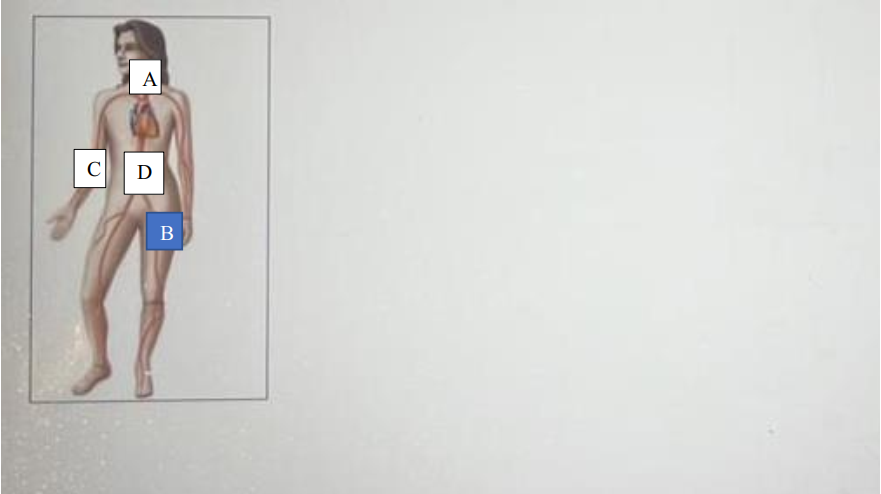To auscultate for a carotid bruit, the nurse places the stethoscope at what location (Select the correct location on the image. To change, click on a new location.)

A
B
C
D
The Correct Answer is A
A. This is the correct area of auscultating for carotid bruit.
B. This is the area of auscultation for femoral artery bruit.
C. This is the brachial artery region.
D. This is the abdominal aorta
Nursing Test Bank
Naxlex Comprehensive Predictor Exams
Related Questions
Correct Answer is ["B","D","E"]
Explanation
A. A diet low in phosphorus is not typically indicated for liver cirrhosis; instead, a low sodium diet is recommended to manage edema and ascites.
B. Noting signs of swelling and edema is important as these are common complications of cirrhosis due to hypoalbuminemia and portal hypertension.
C. Increasing oral fluid intake is not advised as it can exacerbate fluid accumulation in the abdomen (ascites) and peripheral tissues.
D. Monitoring abdominal girth helps in assessing the progression of ascites, which is a common complication of cirrhosis.
E. Reporting serum albumin and globulin levels is crucial as they provide information on the liver's synthetic function and the severity of liver disease.
Correct Answer is D
Explanation
A. Marking the outline of the "olive-shaped" mass is important for diagnosis but is not the highest priority in pre-operative care.
B. Instructing parents regarding care of the incisional area is important but not the highest priority before surgery.
C.Monitoring feedings is important, but the primary concern is ensuring hydration and electrolyte balance, which may be compromised due to vomiting in pyloric stenosis.
D. IV fluids are essential to correct dehydration and electrolyte imbalances caused by vomiting in pyloric stenosis. This is the highest priority to stabilize the infant before surgery.
Whether you are a student looking to ace your exams or a practicing nurse seeking to enhance your expertise , our nursing education contents will empower you with the confidence and competence to make a difference in the lives of patients and become a respected leader in the healthcare field.
Visit Naxlex, invest in your future and unlock endless possibilities with our unparalleled nursing education contents today
Report Wrong Answer on the Current Question
Do you disagree with the answer? If yes, what is your expected answer? Explain.
Kindly be descriptive with the issue you are facing.
